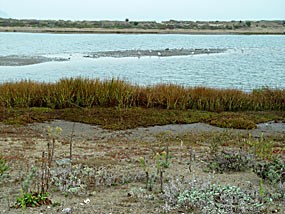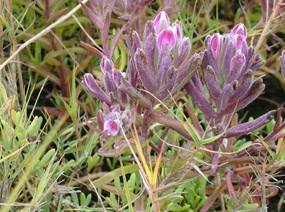
NPS Photo Estuaries provide transition from ocean to land. Freshwater streams meet saltwater tides creating one of the most fertile habitats on earth. Fast growing marsh vegetation provide habitat for decomposers, and the food system is based on detritus (decomposed plant materials) rather than live plants. Estuaries also act as a doorway for ocean fish who spawn in freshwater streams such as Coho salmon and steelhead trout. For other fish and crabs, estuaries are the perfect place to spawn, leaving the juveniles in the protection of the vegetation and abundant food supply to grow up until they are ready to enter the open ocean. Estuaries also provide important stopovers for migrating ducks and shorebirds as they fly thousands of miles up and down the Pacific Flyway. The life of marshes is determined by the tides that wash in and out twice daily. They are either submerged by salty water or left high and dry as the tides recede. Marsh organisms are distributed at different tidal levels, depending on their ability to withstand the stress of tidal inundation. Eelgrass beds grow in channel bottoms and deep basins, supporting sponges, tunicates, and moss animals. Most of these animals are filter feeders or graze on microscopic algae that grow on the leaves of the eel grass. In the mudflats (shallow areas where little vegetation grows), are worms, clams, and snails. Most of these animals are detritivores, filtering organic particles from the water like crabs and shrimp. Raccoons and fox also regularly come down to water’s edge looking for a snack. 
NPS photo The threatened Point Reyes bird's beak ranges along the central California coast, but due to widescale development of marshlands, numbers have quickly dropped. This small annual was introduced to the recreated salt marsh at Crissy Field in 2001. The endangered California sea blite, although once abundant from Morro Bay up the central California coast, has been extirpated from San Francisco Bay. This small succulent shrub was also introduced to the recreated salt marsh at Crissy Field in 2001. It has since done poorly and reintroduction status is being considered. 
Pacific Coast Science & Learning Center
Browse more resources about wetlands and estuaries in San Francisco Bay Area parks. |
Last updated: May 22, 2018
